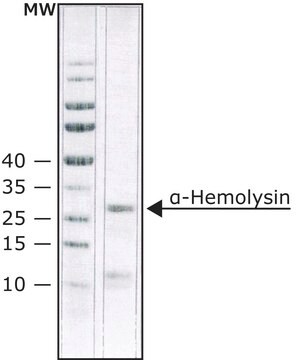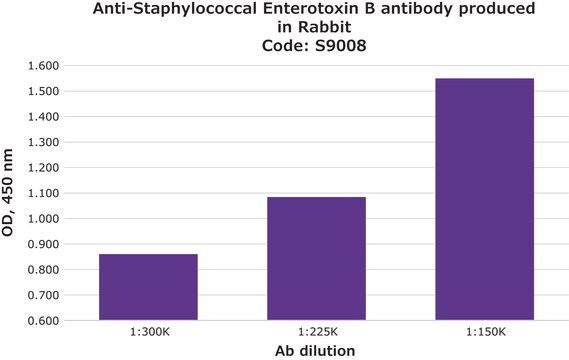P3838
Protein A from Staphylococcus aureus
Soluble, Cowan Strain, essentially salt-free, lyophilized powder
Synonyme(s) :
Protein A, Staphylococcus aureus Protein A
About This Item
Produits recommandés
Conjugué
unconjugated
Niveau de qualité
Forme
essentially salt-free, lyophilized powder
Technique(s)
ELISA: suitable
immunohistochemistry: suitable
immunoprecipitation (IP): suitable
western blot: suitable
Capacité
7-14 mg/mg, solid binding capacity (human IgG)
Numéro d'accès UniProt
Température de stockage
2-8°C
Informations sur le gène
Staphylococcus aureus subsp. aureus NCTC 8325 ... SAOUHSC_00069(3919448)
Vous recherchez des produits similaires ? Visite Guide de comparaison des produits
Application
Actions biochimiques/physiologiques
Protein A also participates in a number of different protective biological functions including anti-tumor, toxic, and carcinogenic activities. In addition to acting as an immunomodulator, it also has antifungal and antiparasitic properties.
Notes préparatoires
Clause de non-responsabilité
Code de la classe de stockage
11 - Combustible Solids
Classe de danger pour l'eau (WGK)
WGK 3
Point d'éclair (°F)
Not applicable
Point d'éclair (°C)
Not applicable
Équipement de protection individuelle
Eyeshields, Gloves, type N95 (US)
Faites votre choix parmi les versions les plus récentes :
Déjà en possession de ce produit ?
Retrouvez la documentation relative aux produits que vous avez récemment achetés dans la Bibliothèque de documents.
Les clients ont également consulté
Notre équipe de scientifiques dispose d'une expérience dans tous les secteurs de la recherche, notamment en sciences de la vie, science des matériaux, synthèse chimique, chromatographie, analyse et dans de nombreux autres domaines..
Contacter notre Service technique












